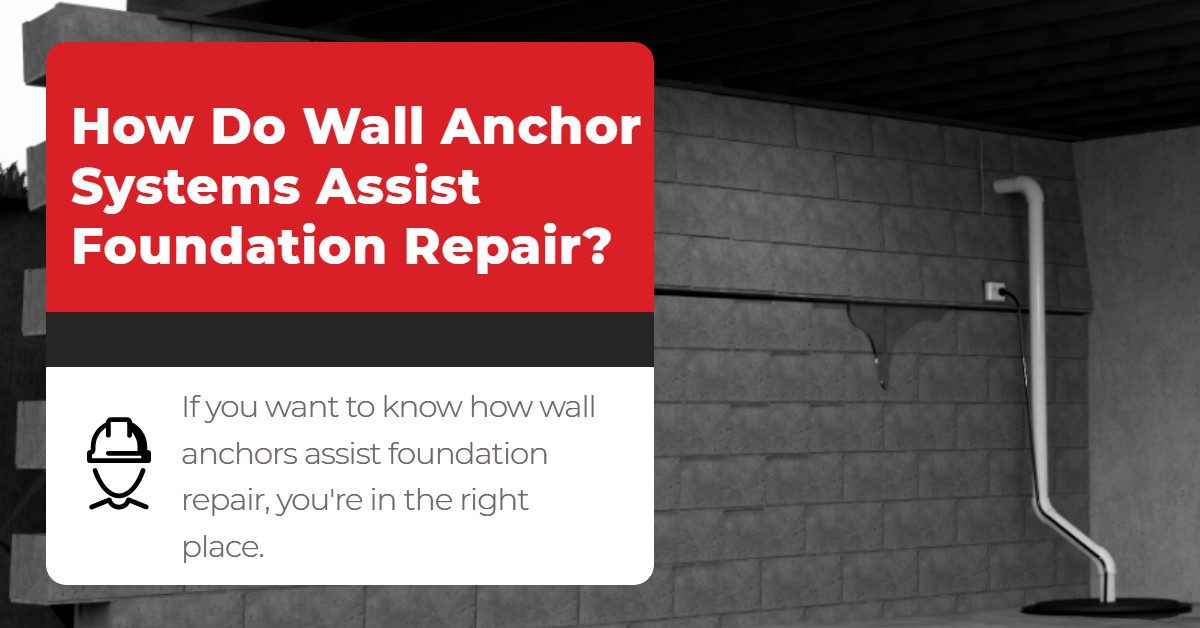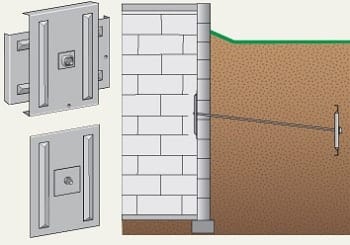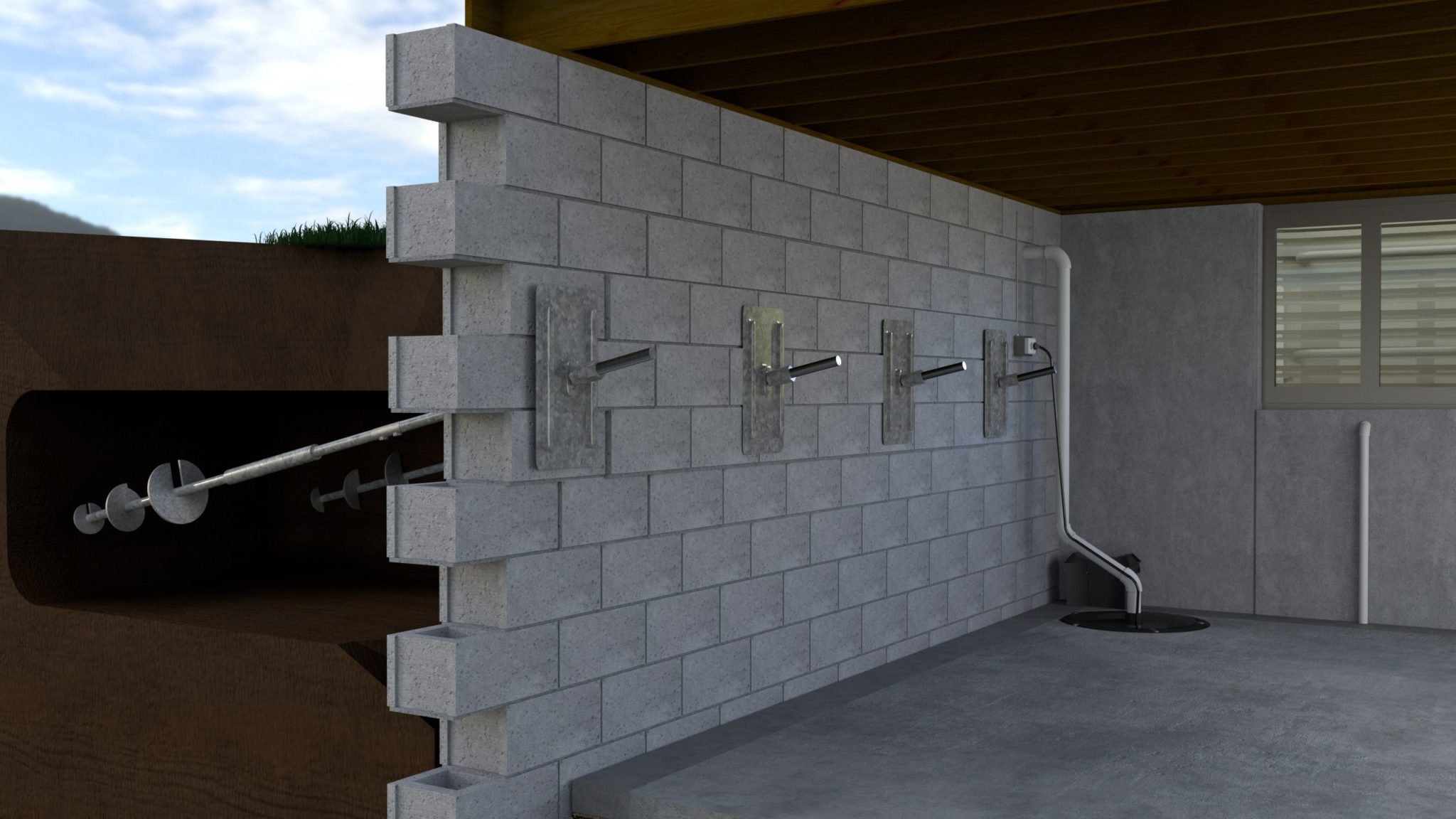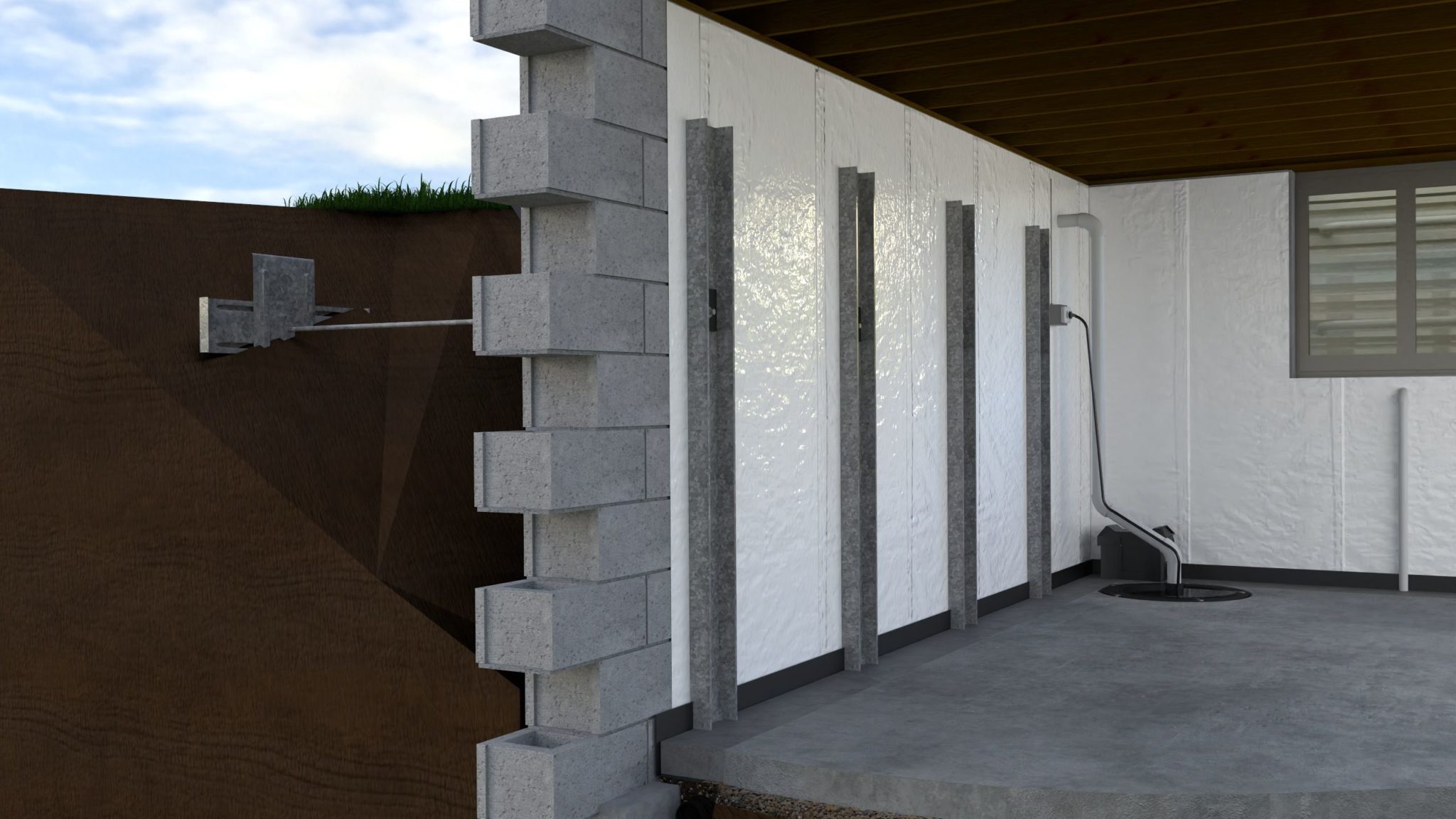If you want to know how wall anchors assist foundation repair, you’re in the right place. Back in 1992, the Chief Appraiser for the U.S. Department of Housing and Urban Development identified wall anchor systems as the most effective means of stabilizing bowing foundation walls. This article is going to explain why that statement is still true.
How Do Wall Anchor Systems Assist Foundation Repair?
Foundation walls should be solid, upright, and holding firm at a 90-degree angle. Wall anchors are designed to stabilize cracked, leaning, and bowing walls. Anchors can also support failing seawalls and deteriorating retaining walls.
Why Do Walls Bow Or Lean?
The biggest reason your walls are bowing or leaning is because of excessive lateral pressure outside the wall. All that pressure can be too much for your basement, seawall, or retaining wall to handle. Here’s why that happens.
- Expansive soil – Clay-rich soils are prone to absorbing a lot of water. The more water they absorb, the more the dirt expands. The more the dirt expands, the more pressure is placed against your wall. Expansive soils also shrink when they dry, removing support from your wall. The constant cycle of swell and shrink places repetitive stress on your foundation. The American Society of Civil Engineers estimates that 1/4 of all homes in the United States have some damage caused by expansive soils.
- Hydrostatic pressure – Your foundation wall acts as a barrier or dam against the soil outside your home. When soil starts to accumulate too much water and has nowhere to go, it starts to push against your wall. Home’s built in areas with a high water table are most prone to hydrostatic pressure. Water can then use bowing walls to leak into your basement. Read more about foundation leak repair solutions.
- Frost heave – When water freezes, its volume increases by about 9%. In colder climates, saturated soil can freeze, increasing the weight of the dirt. The increase in weight will push against your wall. When the dirt finally unfreezes, the change in weight and pressure allows the wall to fall back to its original position. This back and forth motion causes severe stress on your foundation.
A bowing wall is just one example of major foundation problems. Read more on other signs of foundation failure.
Wall Anchor Systems For Basements
Below are the most common wall anchor systems for basement foundation repair.
Wall plate anchors – Wall plate anchors are designed to stop the inward movement from a bowing wall without adding additional stress to the home. The system contains three working parts.
- An inside wall plate is attached to your bowing/leaning wall.
- An outside anchor is placed in the surrounding soil (contractors need at least 10 feet of space to place the outside anchor.
- And lastly, a high-strength rod ties them together.
Helical tieback anchors – Just like wall plate anchors, helical tieback anchors are screwed into the dirt to pull the affected wall back into place. This system only requires two parts instead of three.
- First, a wall plate is attached to the affected wall.
- Then, the corkscrew-like anchor is drilled into the dirt from inside the basement. As the anchor twists, the wall is straightened.
Helical tieback anchors don’t require excavation and are perfect if there is limited interior and exterior access.
C-channel anchors – C-channel anchors are mainly used for sheering walls. Sheering means the top of the basement wall has moved inward while the bottom part of the wall stays put. C-channel anchors systems work in four steps.
- First, a steel beam is attached to the affected wall.
- Second, an outside anchor is placed in the soil, again needing at least 10 feet of space.
- Third, a high-strength rod ties the steel beam to the outside anchor.
- Lastly, the steel beam is anchored to your basement wall footer.
The c-channel anchor can be torqued to straighten or stabilize the wall over time.
Wall Anchor Systems For Seawalls
If you live on a lake, canal, inlet, river, or ocean, chances are you have a seawall protecting your property from erosion. Unfortunately, the walls themselves can erode over time. Instead of replacing the entire wall, contractors can use helical seawall anchors to support the failing structure. Using the same process as helical tieback anchors, helical seawall anchors can be installed from the land or waterside using a barge. The anchors can be installed at an angle to avoid pools, patios, and building foundations.
Helical Tie-Back Anchor System – Helical wall tieback anchors are designed to straighten or strengthen seawalls, basements, and retaining walls. This method of shoring has become very popular with the engineering community due to their strength and ease of measuring capacity.
Helical tiebacks has many of the same benefits as other helical anchors in the fact that they install with light weight, portable equipment, are not adversely effected by weather and can be load tested immediately upon installation. Often Helical Tie Backs are the preferred method of shoring by engineers due to their capacity to torque relationship and predictability of ultimate capacity.
Hydrostatic Relief Drains – Problems occur when weep holes in seawalls, retaining walls, and bulkhead panels either get clogged, or don’t allow the groundwater to escape, or the weep holes are free from the filter fabric and this allows the soil and landfill to escape through them and into the water. The weep holes are there to relieve hydrostatic pressure put upon the seawall, retaining wall, and bulkhead by the groundwater developing on the landward side of the wall.
The hydrodynamic pressure of perched water and seepage water causes loss of landfill without the proper erosion control system. Weep holes reduce soil erosion from occurring to maintain the dignity of the owner’s property. Therefore, the functions are to keep the soil and land in and allow the water, from the landward side, out.
Wall Anchor Systems For Retaining Walls
Retaining walls are used to prevent erosion and support properties that have steep slopes. Retaining walls can fail because of a variety of reasons, the most common being improper reinforcement. This is where deadman anchors come in. Deadman anchors use concrete block and tie rods to support or pull back failing retaining walls. The process works in two steps.
- First, poured concrete blocks are placed 10 to 15 feet away from the retaining wall.
- Then, tie rods are attached to the blocks and connected to the retaining wall.
Who To Call For Wall Anchors & Foundation Repair
The above repair methods should be handled by professionals. Call Foundation Professionals of Florida! We’re an award-winning and top-performing company servicing Florida, Georgia, Alabama, Mississippi, Louisiana, Tennessee, Kentucky, North Carolina, South Carolina, Virgin Islands, and the Florida Keys. Besides foundation repair, we provide basement waterproofing, crawl space repair, slab lifting, and more. Schedule an appointment today!






